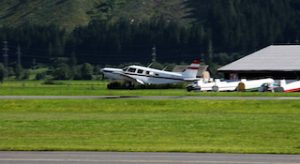The Perfect Job Advertisement For A Struggling Airline Pilot
 Many airline pilots lose jobs during market downturns. Career setbacks hurt both income and stability. Yet a strong job advertisement can change that. New opportunities appear daily across aviation platforms. Pilots must search often and act fast. Staying consistent helps build momentum. Each job advertisement leads to a new possibility.
Many airline pilots lose jobs during market downturns. Career setbacks hurt both income and stability. Yet a strong job advertisement can change that. New opportunities appear daily across aviation platforms. Pilots must search often and act fast. Staying consistent helps build momentum. Each job advertisement leads to a new possibility.
Checking job advertisement
Most airlines post job openings on their own websites. These pages update often and stay reliable. Pilots should check regional and major airline sites. Websites include job advertisement listings with clear details. These listings mention aircraft type, base location, and schedule. Daily checks help avoid missed opportunities. Career pages show open positions without third-party fees. That supports direct access to hiring managers. Most pages allow profile creation. Subscriptions notify users when jobs open. Job alerts save time and energy. Airline sites remain a dependable search option.
Using aviation job boards
Aviation job boards post job advertisements across multiple airlines. Sites like Avjobs and PilotCareerCenter lead this space. Each board allows pilots to filter by license, region, and pay. Job advertisements appear based on recent updates. Boards also show expired jobs to help track industry demand. These platforms allow resume uploads and fast applications. Some also support anonymous profiles. That protects privacy while showing interest. Pilots can apply to dozens of airlines in one day. Job boards speed up the process and increase exposure.
Exploring government aviation portals
Many government agencies run aviation websites. These include listings for state-owned or partner airlines. Agencies post job advertisements that follow public hiring systems. These jobs include added stability and strong benefits. Portals may also post airport or ATC support jobs. Pilots can work short-term while waiting for cockpit jobs. This helps pay bills and maintain industry access. Government platforms remain free and trustworthy. They rarely post duplicate jobs. Daily use builds results over time.
Using Indeed for wider reach
Indeed stays the largest job search engine. It shows job advertisements from many airline sources. Pilots can type keywords like airline pilot or ATR captain. Location filters narrow the search. Date filters show fresh jobs at the top. Indeed allows pilots to store resumes and submit fast. Custom alerts send new listings by email. Saved searches make things faster each day. Indeed works well for pilots seeking local and global jobs.
Searching on LinkedIn for better visibility
LinkedIn helps pilots connect with recruiters. Each profile acts as a digital resume. Job advertisements appear based on skills and interests. Airlines also contact pilots directly through this platform. Pilots should follow airlines and aviation groups. This brings daily job alerts. Posts from hiring managers include unlisted openings. Joining pilot communities adds value. Sharing updates increases visibility. LinkedIn becomes more useful with each use.
Trying Facebook job groups
Facebook hosts large job-focused aviation groups. These include global and regional pilot communities. Groups post daily job advertisements with direct recruiter contacts. Airline staff often post updates in real time. Pilots should join trusted and verified groups. Commenting on job posts shows interest. Sharing availability increases reach. Group searches show older posts too. Facebook helps when traditional sites move slow. Peer support also builds confidence.
Checking airline contracting companies
Many airlines use third-party staffing firms. These firms specialize in short-term or long-term contracts. Contracting companies list job advertisements on their websites. Agencies like Rishworth, Brookfield, and Zenon handle global placements. Their websites include job requirements, pay rates, and benefits. Recruiters reply fast to pilot applications. Contract jobs help maintain hours and currency. These posts update weekly. Monitoring them improves job options.
Subscribing to pilot bob newsletters
Many aviation platforms offer job newsletters. These send job advertisements directly to inboxes. Pilots sign up with email and set preferences. Newsletters highlight new and high-demand jobs. Some include airline hiring forecasts. Reading newsletters each morning supports faster applications. That helps beat other candidates. Most newsletters are free. They often link directly to applications. Subscriptions improve awareness without wasting time.
Joining aviation forums
Pilot forums remain useful for insider news. Pilots share job advertisements and interview updates. Forums include PPRuNe, Airline Pilot Central, and The Pilot Network. Discussions cover pay, fleet types, and company culture. Members often post job leads before listings go public. Pilots exchange tips and contacts. Forum messages help explain job details not listed online. Each post adds insight. Forums support smart decision-making.
Using recruitment apps
Several apps focus on pilot hiring. Apps like FindaPilot, AeroCrew Solutions, and Wingman post daily job advertisements. Mobile alerts help track fast-moving listings. Applications take seconds using stored documents. Most apps let pilots choose aircraft types and regions. Custom filters help avoid junk posts. Each alert includes recruiter contact details. Apps improve speed and give more control. They support daily consistency.
Contacting airline recruiters directly
Direct contact helps pilots stand out. Recruiters often share email addresses on websites. A short message with resume builds visibility. Airlines prefer proactive applicants. That shows interest and commitment. Polite follow-ups matter. Recruiters receive many messages each week. A gentle reminder every few weeks works best. That improves memory and builds rapport. Some jobs are shared only with active contacts.
Exploring temporary aviation jobs
Temporary jobs help pilots stay active. Job advertisements appear under seasonal pilot, training support, or charter flights. These short-term jobs often lead to full-time work. Pilots maintain licenses and earn income. Many temporary jobs hire fast. Some require fewer flight hours. Listings appear on aviation boards and airline sites. Each job keeps pilots engaged while searching. Temporary work supports long-term growth.
Checking university aviation programs
Flight schools and universities post job advertisements for flight instructors. These include part-time or full-time options. Instructing helps pilots build hours. It also keeps skills sharp. Universities need certified instructors year-round. Positions appear on academic and aviation job sites. Contacting aviation departments brings leads faster. Teaching builds leadership and opens new paths. This option suits pilots waiting for airline interviews.
Searching abroad for broader options
Many international airlines seek foreign pilots. Job advertisements appear on global job boards. Requirements include license conversion and medical exams. Airlines often support relocation and housing. Searching global listings expands options fast. Pilots in low-demand areas can find high-demand jobs overseas. Careful research helps avoid scams. Reputable agencies protect pilot interests. International searches bring new hope.
Using resume databases
Some platforms allow pilots to upload resumes into talent pools. Recruiters search and contact pilots directly. Pilots update skills, hours, and aircraft types. This builds passive job leads over time. Databases support pilots without daily searching. Airlines can search based on exact criteria. That improves matching and reply rates. Resume tools work best with full profiles. Profiles must stay updated weekly.
Monitoring regional airline hiring
Regional airlines hire often due to crew turnover. They post job advertisements on company sites and job boards. These airlines offer quick interviews and short training periods. Entry becomes easier for lower-hour pilots. Regional jobs build turbine time and prepare for major airlines. Pay grows with experience. Pilots should apply broadly across regions. Some regional jobs include bonuses and base options.
Watching industry news sites
Aviation news sites post hiring updates. These include launch announcements and fleet expansions. Growth brings new job advertisements. Sites like FlightGlobal and SimpleFlying share updates daily. Reading news helps pilots act fast. Airline changes lead to new pilot needs. News posts often link to hiring portals. Reading helps pilots stay informed and ready. Industry news brings fresh opportunity.
Following airlines on social media
Airlines use social media to post hiring news. Platforms like Twitter and Instagram support fast updates. Job advertisements appear in stories and posts. Some include recruiter contact links. Pilots follow airline pages to catch fast openings. Comments show interest and build engagement. Likes and shares increase visibility. Direct messages help recruiters notice pilots. Social media adds one more daily tool.
Creating a job search routine
Consistency helps pilots stay focused. Each day includes site checks, email reviews, and profile updates. Applications should go out every morning. Tracking submissions helps avoid repeats. A journal supports better organization. Listing jobs applied to keeps things clear. Follow-ups should happen every two weeks. Routines reduce stress and build hope. Each job advertisement becomes a fresh opportunity.
Hope beyond the clouds
Struggling pilots face stress and setbacks. Yet hope grows with each step taken. Job advertisements bring a path forward. Each listing carries a chance to rebuild. By staying active, pilots increase their options daily. The right job arrives with effort, patience, and consistency. Keep flying forward.










